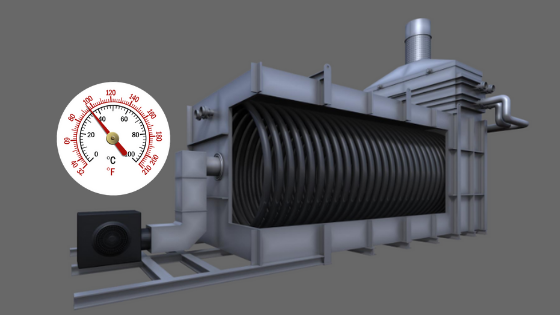What is A Direct Fired Heater? All You Need to Know

Estimated reading time: 4 minutes

Direct Fired Heaters: Design & Operation
A direct-fired heater, or an industrial furnace, uses the hot gases of combustion to transfer the heat to the liquids flowing in the heat exchange coils. Direct-fired heaters can either be used in radiant or convection heat exchanges and adopt different configurations according to their applications. The types of configuration vary according to these factors: structural configuration, radiant tube coil configuration and burner arrangement.
The different configurations vary accordingly:
| Structural configuration | Radiant-tube coil configuration | Burner arrangements |
| Cylindrical | Vertical | Up-fired |
| Box | Horizontal | Down-fired |
| Cabin | Helical | Wall-fired
|
| Multi-cell box | Arbor |
Source: API 560, section 4 (Figure 1).
The different configuration and set up of these factors give direct fired heaters the flexibility to meet the different requirements for different industries and commercial objectives. What sets the direct fired apart than indirect fired heaters is the cheaper costs and higher efficiency. While there are various furnace designs for different functions, they do share several common features and components to its design, read more here.
The 3 main types of direct fired heaters are:
- Radiant heater
- Convection heater
- Radiant-Convection Heater
Radiant Heater
A radiant heat transfer comprises of coils made up of bare tubes in a winding pattern allowing a radiant heat transfer around it. This system has downsides in temperature sensitive applications since radiant heat transfer from the tubes are harder to control and may be unevenly distributed around the coil’s surface.
Convection Heater
A convection heater is a combination of bare tubes and tubes with fins arranged in a tight bundle. The bare tubes shield the finned tubes from direct radiant heat. Hence, eliminating the uneven distribution of heat.
Radiant-Convection Heater
The most common direct-fired heater combines the intense heat capabilities of the radiant heater with the even heat distribution of the convection heater by using both types of coils in tandem within one system.
In a radiant-convection heater, the heating process starts in the radiant section, designed to yield efficiency in a minimal space. Flue gas then travels up from the radiant section to the convection system. The tight bundle of bare and finned tubes absorbs the remaining heat in the flue gas, increasing the heater’s efficiency and temperature consistency.
Direct-fired heaters typical system applications include:
- Thermal oil heating
- Regeneration gas heating
- Other direct process heating
- Natural gas heating
- In-line liquid heating
- In-line gas heating
- Crude oil heating
With combustion and heat transfer technologies continually evolving, new engineered solutions for energy production command the increased use of fired heaters in a wide range of specialized process applications. Reducing downtime and maintenance costs and improving thermal efficiency are now top priorities.
Common Problems Affecting Performance of Direct Fired Heaters
Occasionally, direct fired heaters that have operated for long periods of time develop operating problems that do not allow for optimal operation. Hence, operators need to investigate the factors that affect the performance of these fired heaters – such as refractory materials and lining reliability. They are crucial in increasing the performance of fired heaters. Not only can proper refractory lining optimise production yield and minimise energy costs, but also enable consistent high performance of a furnace over the lifecycle of the refractory lining which can be over 20 years.
Common problems that occur from these 2 key factors largely affect the output as the system must be temporarily shut down. Hence, engineers and operators need to look out for early signs of refractory fatigue and failure. Besides the common problems such as improper refractory design or improper installation techniques, here are 7 of the most common refractory failures and causes:
- Fiber modules fallen from roof or gaps noticed
- Failing brick walls (deformation or collapse)
- Bridgewall or tunnel wall leaning or deformation
- Castable cracking
- Floor cracking / heaving
- Convection castable corbel damage in convection section
- Mating dissimilar materials
Direct-Fired Heaters: Their Design & Operation is a 3-day training course held from 21-23 October 2019 (Kuala Lumpur) and 28-30 October 2019 (Jakarta). The course is crafted to allow engineers to better understand the many functions of direct fired heaters. We focus on the most common design types, considering fuel type, combustion chemistry, heat transfer and release, combustion air supply and control, and mechanical factors including burners, refractory, tube design, and corrosion and fouling mitigation. We also review techniques to improve efficiency, operate safely and meet emission guidelines.
 |
